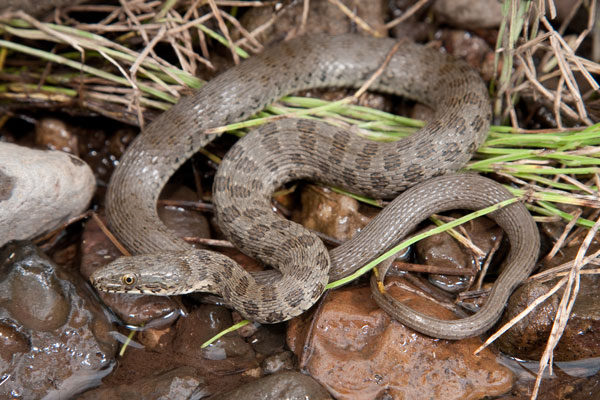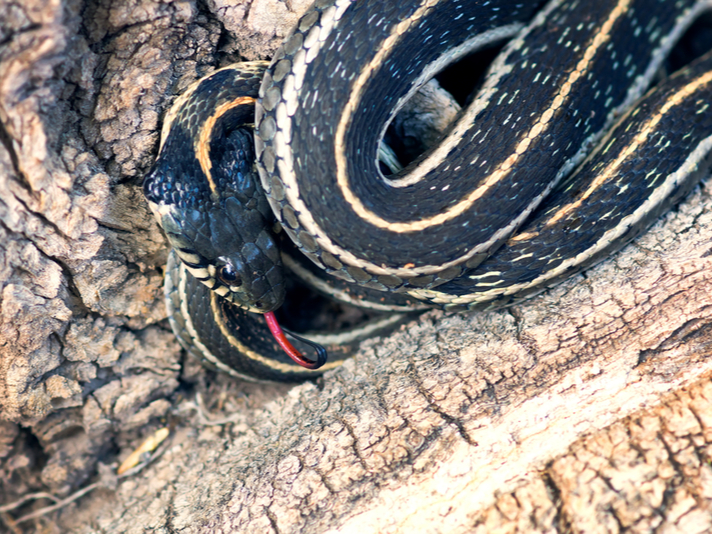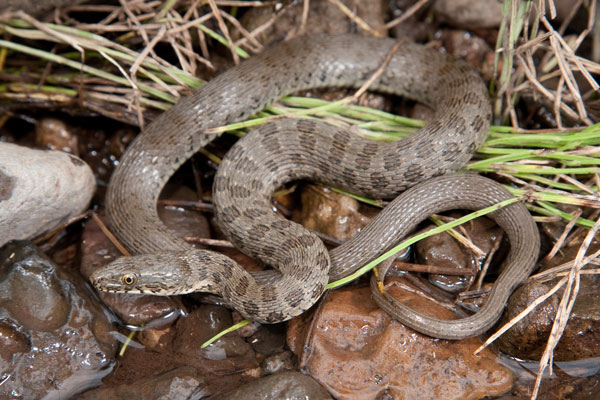The habitat of both garter snake species are suffering from issues such as livestock grazing, agricultural and urban sprawl.
The northern Mexican garter snake (Thamnophis eques megalops) and the narrow-headed garter snake (Thamnophis rufipunctatus) have experienced wide ranging declines, and their native habitat needs to be protected. The United States Fish and Wildlife Service has not acted to protect the habitat of these these reptiles, so the Center for Biological Diversity have filed a formal notice of intent to sue the agency for failing to protect these snakes.

PHOTO (C) PIERSON HILL/Center for biological diversity
Seventy six percent of narrow-headed garter snake populations are found in low densities or may already be gone.
“If these unique, beautiful garter snakes are going to survive, federal officials need to start protecting their habitat,” Jenny Loda, a Center biologist and attorney who works to protect vulnerable amphibians and reptiles said in a statement released by the Center. “Delay means death for these extremely vulnerable creatures. Safeguarding the rivers these snakes need to live will also benefit other native species and people.”
The Center initially petitioned the USFWS to protect both species more than 10 years ago, and in 2014, they were both listed as threatened under the Endangered Species Act. The USFWS also proposed that more than 420,000 acres of habitat for the snakes also be protected, but those protections were never realized, so the Center filed a notice of its intent to sue on August 21.
Northern Mexican Gartersnake Found In Its Native Range After 100 Year Absence
The habitat of both the northern Mexican garter snake and the narrow-headed garter snake has been declining due to the destruction of streams from livestock grazing, agricultural and urban sprawl, removal of water from critical stream habitats. The snake has also been adversely affected by the introduction of nonnative species, including sunfish, largemouth bass, and crayfish.

irinak/shutterstock
The USFWS found that 83 percent of northern Mexican garter snake populations are found in low densities.
The fish and wildlife service's own data found that 83 percent of northern Mexican garter snake populations and 76 percent of narrow-headed garter snake populations are found in low densities or may already be gone, the Center said. A critical habitat designation for these two garter snake species would require federal agencies to consult with the USFWS to help prevent damage or destruction of these ecosystems.
“Studies show that species with critical habitat protections are twice as likely to be recovering as those without,” Loda said. “It’s time for the Service to stop dragging its feet and comply with the Endangered Species Act by finalizing habitat protections for these threatened snakes.”



